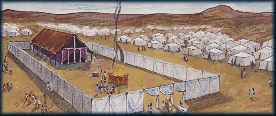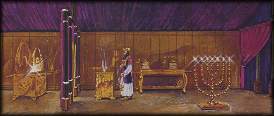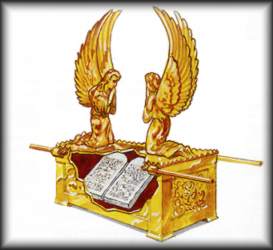
Sin is the problem, but God has the solution.
What makes sin the great problem? It is the root cause of all other problems. War slays its millions, leaving weeping widows and orphans. There can be no peace until sin is eradicated. Crime costs billions of dollars and fills the hearts of multitudes with fear. "Sin is the transgression of the law" (1 John 3:4). So until someone solves the sin problem, crime will continue. The wreckage of broken homes piles up on the rocks of human selfishness. Selfishness is sin. The only answer to security in the family lies in getting rid of sin. Disease fills our hospitals and saps the vitality of many people. Directly or indirectly, sin causes it all. When God finally and completely solves the sin problem, "the inhabitants shall not say, I am sick: the people that dwell therein shall be forgiven their iniquity" (Isaiah 33:24). But the most pervasive problem of all, is the problem of the restless human heart suffering under the burden of guilt. To solve the evils that plague us as individuals and as a society the root problem of sin must be dealt with.
Yes, sin is man's great problem, but it is also God's great problem. He longs to have us with Him in happy fellowship. Yet, since sin made the separation, sin must be removed for the separation to end.
Why should it be such a problem to get rid of sin? God would like to destroy it at once. But many of those He loves are infected with this deadly virus. The only solution that can satisfy God's heart of infinite love must separate sin from sinners.
The plan of salvation is revealed in God's temple in heaven. In order that we might become acquainted with it, God prepared the most marvelous visual aid of the ages. He planned a miniature model, gave Moses the directions, and told Him to make it like the pattern. "Let them make me a sanctuary; that I may dwell among them" (Exodus 25:8). By studying the earthly sanctuary and the services that were conducted there, we shall better understand the plan of salvation being worked out in the heavenly sanctuary.
Yes, sin is the problem, but His solution is revealed in the sanctuary and in its services. Let us take a look at the tabernacle the Israelites prepared at God's command, compare it with the temple in heaven, and see what they reveal about the plan of salvation.
The Sanctuary
The tabernacle was a magnificent structure [pitched in the center of the camp of Israel] so constructed that it could be taken apart and borne with the Israelites in all their journeyings.
The Courtyard

The sacred tent was enclosed in an open space called the court, which was surrounded by hangings, or screens, of fine linen, suspended from pillars of brass. The entrance to this enclosure was at the eastern end. The hangings of the court being only about half as high as the walls of the tabernacle, the building could be plainly seen by the people without. [The surrounding residential tents were at a greater distance from the tabernacle than the above drawing indicates.]
In the court, and nearest the entrance, stood the brazen altar of burnt offering. Upon this altar were consumed all the sacrifices made by fire unto the Lord, and its horns were sprinkled with the atoning blood. Between the altar and the door of the tabernacle was the layer, which was also of brass. At the layer the priests were to wash their hands and their feet whenever they went into the sacred apartments, or approached the altar to offer a burnt offering unto the Lord.
The Holy Place
In the first apartment, or holy place, were the table of showbread, the candlestick, or lampstand, and the altar of incense. The table of showbread stood on the north. With its ornamental crown, it was overlaid with pure gold. On this table the priests were each Sabbath to place twelve cakes, arranged in two piles, and sprinkled with frankincense. On the south was the seven-branched candlestick, with its seven lamps. Its branches were
 |
click on picture for larger image (26K) |
ornamented with exquisitely wrought flowers, resembling lilies, and the whole was made from one solid piece of gold. There being no windows in the tabernacle, the lamps were never all extinguished at one time, but shed their light by day and by night. Just before the veil separating the holy place from the most holy and the immediate presence of God, stood the golden altar of incense. Upon this altar the priest was to burn incense every morning and evening; its horns were touched with the blood of the sin offering, and it was sprinkled with blood upon the great Day of Atonement. The fire upon this altar was kindled by God Himself and was sacredly cherished. Day and night the holy incense diffused its fragrance throughout the sacred apartments, and without, far around the tabernacle.
The Holy of Holies
Beyond the inner veil was the holy of holies, where centered the symbolic service of atonement and intercession, and which formed the connecting link between heaven and earth. In this apartment was the ark, a chest of acacia wood, overlaid within and without with gold, and having a crown of gold about the top. It was made as a depository for the tables of stone, upon which God Himself had inscribed the Ten Commandments. Hence it was called the ark of God's testament, or the ark of the covenant, since the Ten Commandments were the basis of the covenant made between God and Israel.
The cover of the sacred chest was called the mercy seat. This was wrought of one solid piece of gold, and was surmounted by golden cherubim, one standing on each end. One wing of each angel was stretched forth on high, while the other was folded over the body (see Exodus 25:20; Ezekiel 1:11) in token of reverence and humility. The position of the cherubim, with their faces turned toward each other, and looking reverently downward toward the ark, represented the reverence with which the heavenly host regard the law of God and their interest in the plan of redemption.
Above the mercy seat, between the cherubim, was the Shekinah, the manifestation of the divine Presence.

The law of God, enshrined within the ark, was the great rule of righteousness and judgment. That law pronounced death upon the transgressor; but above the law was the mercy seat, upon which the presence of God was revealed, and from which, by virtue of the atonement, pardon was granted to the repentant sinner. Thus in the work of Christ for our redemption, symbolized by the sanctuary service, "mercy and truth are met together; righteousness and peace have kissed each other" (Psalm 85:10).
No language can describe the glory of the scene presented within the sanctuary—the gold-plated walls reflecting the light from the golden candlestick, the brilliant hues of the richly embroidered curtains with their shining angels, the table, and the altar of incense, glittering with gold; beyond the second veil the sacred ark, with its mystic cherubim, and above it the holy Shekinah, the visible manifestation of Jehovah's presence. These are all a dim reflection of the glories of the temple of God in heaven, the great center of the work for man's redemption.
The Heavenly Sanctuary
"Now of the things which we have spoken this is the sum: We have such an High Priest, who is set on the right hand of the throne of the Majesty in the heavens; a Minister of the sanctuary, and of the true tabernacle, which the Lord pitched, and not man" (Hebrews 8:1, 2).
The sanctuary in heaven, in which Jesus ministers in our behalf, is the great original, of which the sanctuary built by Moses was a copy. This sanctuary was pitched by the Lord, not by man. In it Christ, our great High Priest, ministers at God's right hand.
In vision the apostle John was granted a view of the temple of God in heaven; he beheld there "seven lamps off/re burning before the throne" (Revelation 4:5). He saw an angel "having a golden censer; and there was given unto him much incense, that he should offer it with the prayers of all saints upon the golden altar which was before the throne" (Revelation 8:3). Here the prophet was permitted to behold the first apartment of the sanctuary in heaven; and he saw there the "seven lamps of fire" and "the golden altar," represented by the golden candlestick and the altar of incense in the sanctuary on earth. Again, "the temple of God was opened" (Revelation 11:19), and he looked within the inner veil, upon the holy of holies. Here he beheld "the ark of His testament," represented by the sacred chest constructed by Moses to contain the law of God.
The tabernacle built by Moses was made after a pattern. The Lord directed him: "According to all that I show thee, after the pattern of the tabernacle, and the pattern of all the instruments thereof, even so shall ye make it." And again the charge was given, "Look that thou make them after their pattern, which was showed thee in the mount" (Exodus 25:9, 40). And Paul says that the first tabernacle "was a figure for the time then present," that its holy places were "patterns of things in the heavens;" that the priests who offered gifts according to the law served "unto the example and shadow of heavenly things, "and that "Christ is not entered into the holy places made with hands, which are the figures of the true; but into heaven itself, now to appear in the presence of God for us" (Hebrews 9:9, 23; 8:5; 9:24).
Moses made the earthly sanctuary after a pattern which was shown him. Paul teaches that that pattern was the true sanctuary which is in heaven. And John testifies that he saw it in heaven.
[God has provided an infinite ransom to effect eternal reunion. The services carried on in the courtyard, in the holy place, and in the most holy place, show how God deals with the sin problem.]
|

